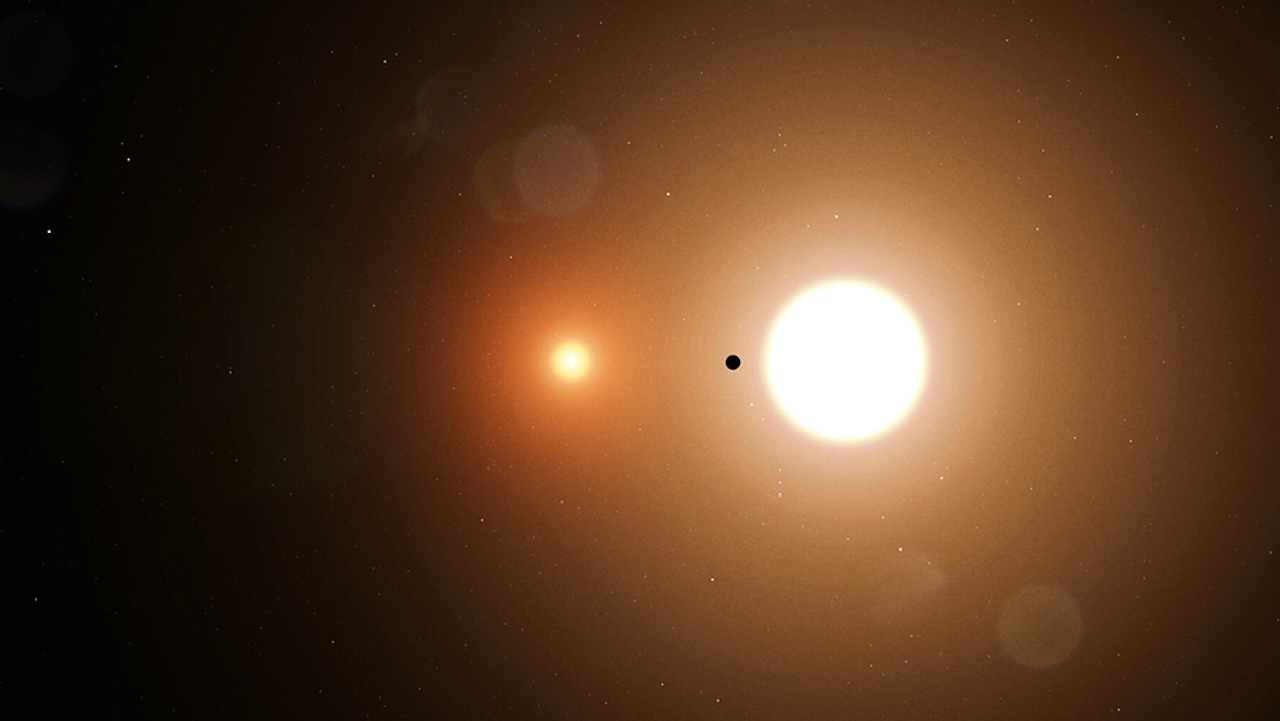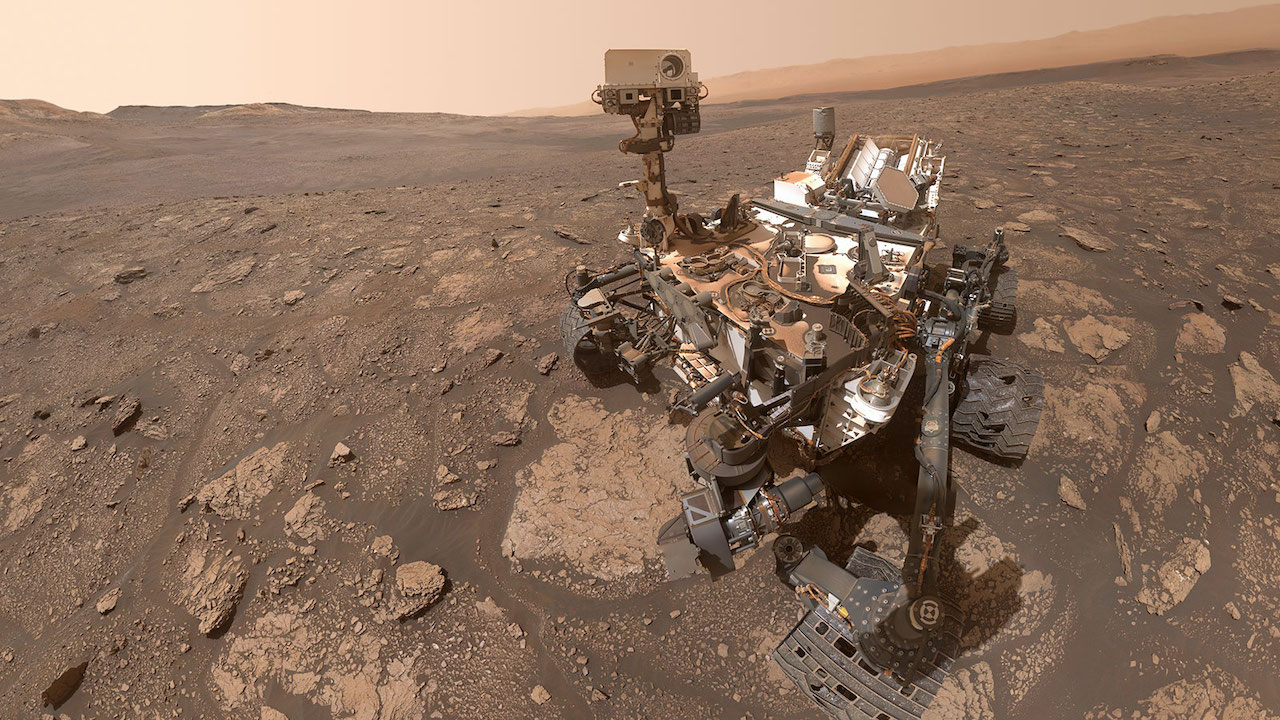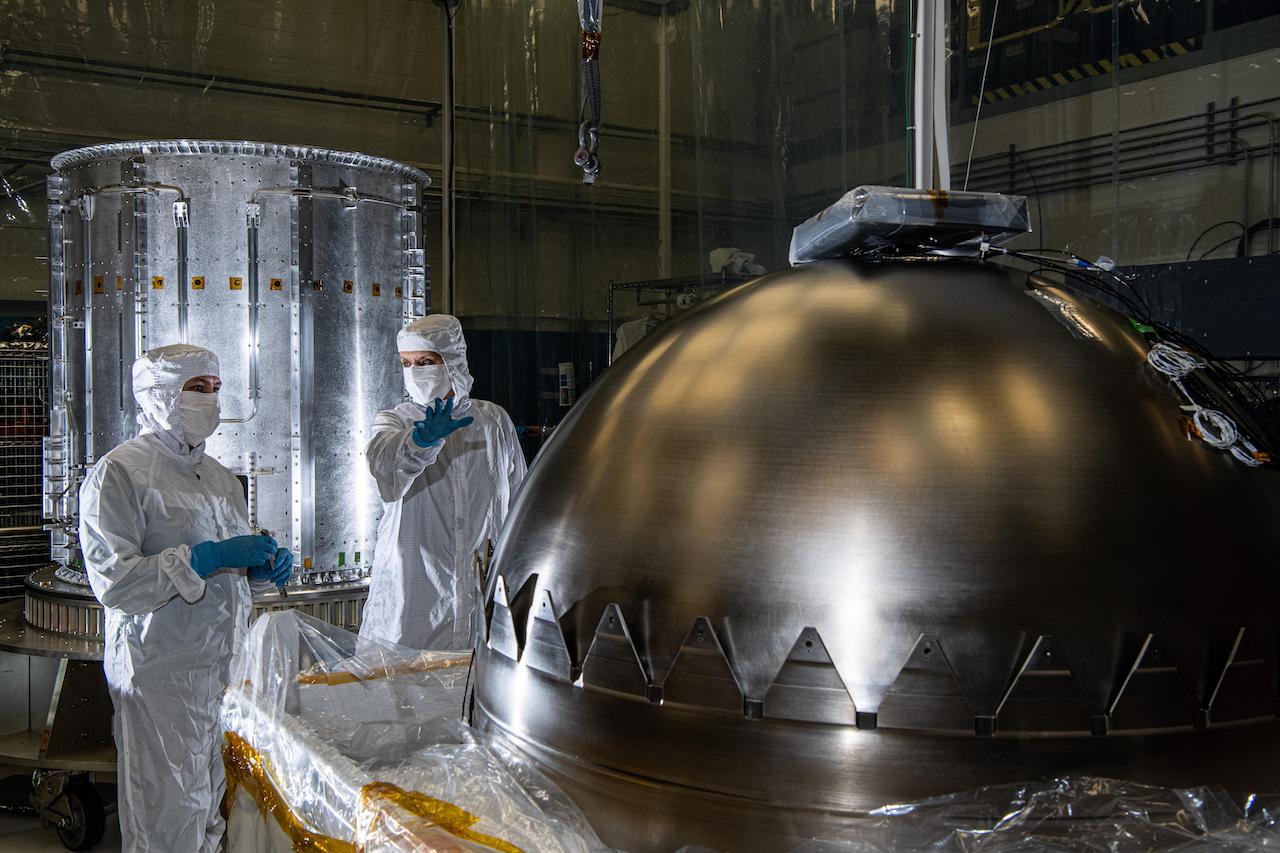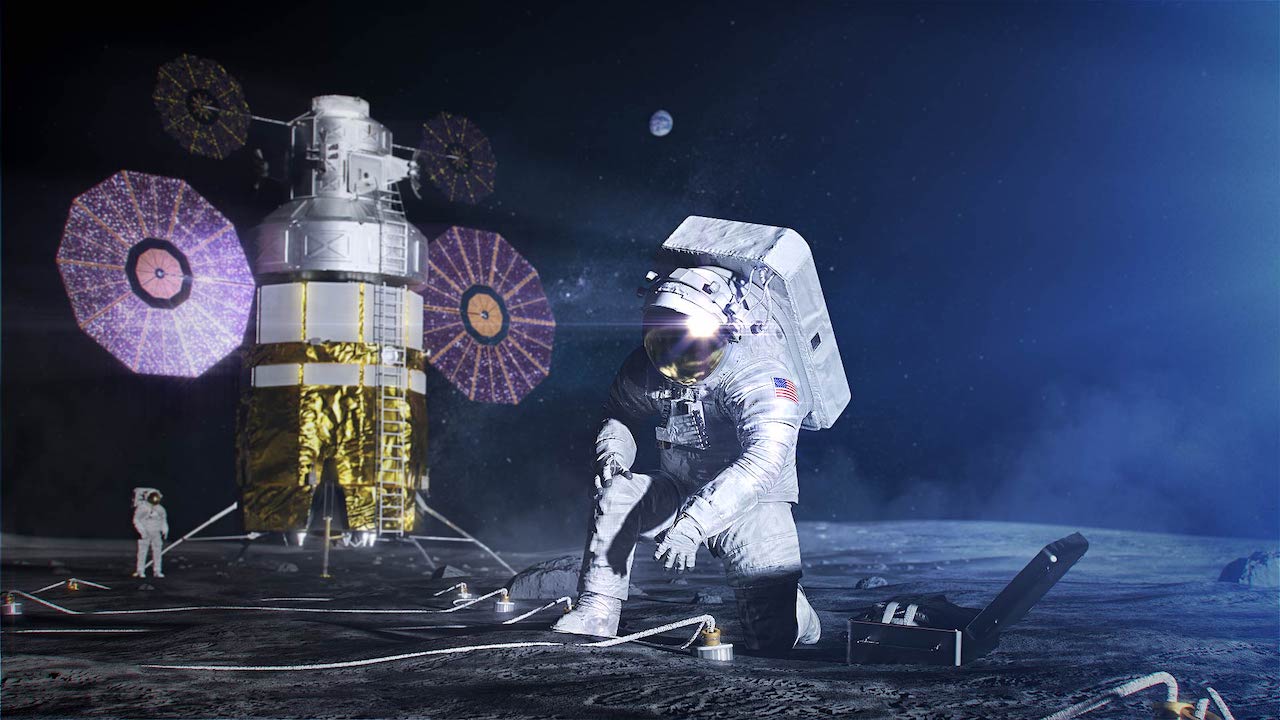How to get a NASA internship
NASA internships play an intrinsic role in a new era of space exploration and astronomy.

During a NASA internship, 17-year-old Wolf Cukier, who in 2019 had just finished his junior year at Scarsdale High School in New York, discovered the exoplanet TOI 1338 b.
This exoplanet, that lies around 1,300 light-years from Earth, is pretty special in terms of worlds outside of the solar system. It the first planet orbiting two stars discovered by NASA’s Transiting Exoplanet Survey Satellite (TESS), but one of the most impressive facts about exoplanet TOI 1338 b is that it was discovered just three days into Cukier's summer internship with the space agency.
"I started to search for an internship related to astrobiology in general as part of the science research program at my high school,” Cukier told Space.com via email. "This program provided a framework for students to gain a background in a subject but required individual students to find a summer internship in their research field in order to continue with the program."

"NASA was one of many places I considered trying to get an internship, and fortunately, it was a successful attempt."
Related: NASA, ESA experts weigh in on diversity and inclusion in space
Cukier is now studying astrophysics at Princeton while working on his own research projects, demonstrating that for up-and-coming scientists and engineers who want to get involved with the next era of space investigation, an internship with NASA is a great place to start.
How to apply for a NASA internship
When it comes to applying for a NASA internship Cukier’s example shows, there isn’t one set path to an internship at NASA.
Breaking space news, the latest updates on rocket launches, skywatching events and more!
"My application process was atypical for NASA interns. During my sophomore year of high school, I sent emails to a bunch of researchers in the field of astrobiology, trying to find someone who was willing to work with a high school student," Cukier explains. "Dr. Ravi Kopparapu at NASA GSFC graciously agreed to work with me over that summer and I worked on calculating habitable zones for circumbinary planets by updating the existing single star climate model.
"After that, I was invited back for the summer after junior year when I worked primarily with Dr. Veselin Kostov. That summer, my role was to look at star systems that were already identified to be binary systems and try to see if I could see any features in them that looked interesting or could potentially indicate a planet."
If potential interns want to follow a more standardized path, they could begin by applying to NASA’s Goddard Space Flight Center, in Greenbelt, Maryland. Goddard offers hundreds of internship opportunities each year across four campuses for all levels of education from high school students to graduates. To be eligible an applicant must have U.S. citizenship and a grade point average (GPA) of at least 3.0 on a 4.0 scale.
Related: High school student discovers alien planet with twin suns just days into a NASA internship
NASA’s Goddard Space Flight Center offers hundreds of internship opportunities each year across four campuses for all levels. It isn’t the only NASA installation that is offering internships either.
NASA Jet Propulsion Laboratory (JPL), La Cañada Flintridge, California, offers around 1,000 applicants places on internships per year, across 10 NASA centers, according to NASA.

The internships include full and part-time placements throughout the year, but most interns come into JPL on a 10-week, full-time, summer internship program for undergraduate and graduate students pursuing degrees in science, technology, engineering, or mathematics.
JPL doesn’t require interns to have completed a degree before they apply for an internship, accepting interns with educational levels ranging from undergraduates all the way up the academic ladder to postdocs.
Competition for internships at JPL is stiff, with thousands of applications received per year for its Southern California laboratory alone. They do offer some advice to help potential applicants to stand out from the crowd.
This includes getting a handle on the varying projects underway at JPL, following NASA news and research, and understanding and applying to the internships that speak to their skills and background.
Cukier also has some advice for potential NASA internship applicants. “Just go ahead and put your voice out there — the worst thing that can happen is that someone tells you ‘no.’
He adds that the experience he gained at NASA has been invaluable in both his studies and in his research simulating meteoroid streams in the inner solar system. "Most of my knowledge about planets and astrobiology initially came from learning while doing my research."
Unsurprisingly, for a space agency whose work ranges from planning to send humans to the moon and beyond, searching the universe for dark matter and dark energy, and observing the effects of climate change on our own planet, the internship roles offered by NASA are equally diverse, extending far beyond potential astronauts.
What missions could interns help shape at NASA?
Cukier's NASA internship was with the space agency’s Goddard Space Flight Center, home to a range of innovative and cutting-edge science projects in fields as diverse as Earth science, astrophysics, heliophysics, and planetary science.
In addition to exploring the Milky Way search for exoplanets, interns at Goddard could find themselves working with data collected from over 50 spacecraft that explore Earth and the wider solar systems as part of Various Goddard.
This includes Astro-E2/Suzaku — a satellite that studies X-rays emitted by stars, galaxies, and black holes — and the Fermi Gamma-ray Space Telescope which allows researchers to study how black holes launch jets of gas outward at relativistic speeds.
Interns at NASA could also find themselves helping handle data from NASA’s Mars Curiosity Rover, exploring the Martian surface as it searches for possible signs of ancient life.

At JPL, students are teamed with NASA scientists and engineers who serve as mentors designating projects. In addition to these projects, selected to match a student’s educational experience, interns work on JPL missions.
One of the missions that interns are currently working on, is the Europa Clipper spacecraft, which will be conducting reconnaissance of the icy Jovian moon from which it takes its name. The JPL craft will search for signs of life and a liquid water ocean beneath Europa’s icy crust.
Cukier Describes two of the qualities he found helped him during his internship were patience and independence. He explains: "research takes a lot of time. The headlines say I discovered the planet on my third day, but it took months before we were sure enough to start writing the paper and this is a fast timeline for research."

NASA’s Pathway to the future
While most NASA interns go on to work in a wide range of fields outside the agency, it does have a program specifically designed for applicants intending to forge a more permanent connection with NASA.
The Pathways Intern Program is NASA’s internship program that offers a direct pipeline to full-time employment at the space agency upon graduation. That makes it the ideal way for budding scientists and engineers to begin a career with NASA.
While the Pathways Intern Program offers engineering, mathematics, and science roles, it also offers internships for people qualified in a wide range of non-STEM fields like human resources, administration, and health and safety.
As interns work to complete Pathways Intern Program they are assessed on their experience through their placement with a view to what full-time role with NASA they could fulfil upon completion. Many interns find themselves in permanent employment with NASA after completion or on limited-term employment with a period of up to six years.

To be placed on Pathways Intern Program an applicant must be over 16 and currently enrolled in an educational institution pursuing a degree or certificate. Applicants must have at least a 2.9 GPA on a 4.0 scale. They also have to be able to complete 640 hours of work, according to NASA careers.
One requirement for the internships mentioned above is U.S. citizenship. NASA does offer an international internship for undergraduates or graduate degree holders in participating countries including Mexico, Canada, Brazil, and Australia.
International applicants are expected to make applications through their relevant space agencies. Like other interns, they are expected to maintain good academic standing and demonstrate an active interest in the U.S. space program, as well as be able to communicate well in English.
On the practical side of things, the majority of NASA internships offer housing and travel allowances to students attending Universities outside a certain radius, 50-miles for JPL placements. Interns with NASA also usually receive a stipend, the amount which varies according to their academic level and the length of the internship.
And there probably isn’t a better time to be a NASA intern.
By 2024 NASA hopes to have landed the first woman and the first person of color on the surface of the moon as part of the Artemis program. This means that interns at NASA currently could not only find themselves an integral part of this history-making mission, but one of them could potentially be the next human to set foot on the moon.
Additional resources
- Meet some NASA interns: NASA STEM
- Learn about JPL’s Summer Internship Program
- What are NASA internships and fellowships?: STEM Resources

Robert Lea is a science journalist in the U.K. whose articles have been published in Physics World, New Scientist, Astronomy Magazine, All About Space, Newsweek and ZME Science. He also writes about science communication for Elsevier and the European Journal of Physics. Rob holds a bachelor of science degree in physics and astronomy from the U.K.’s Open University. Follow him on Twitter @sciencef1rst.
